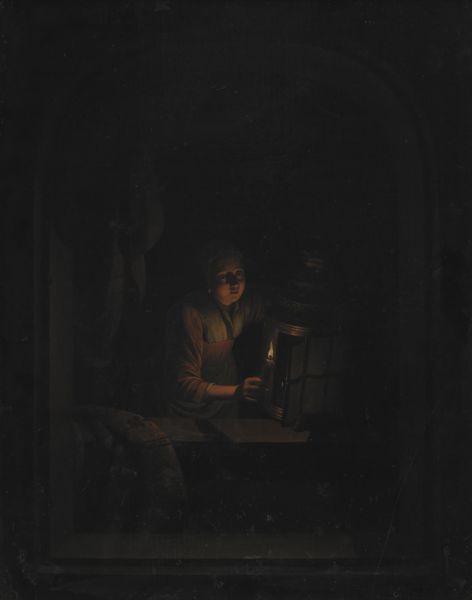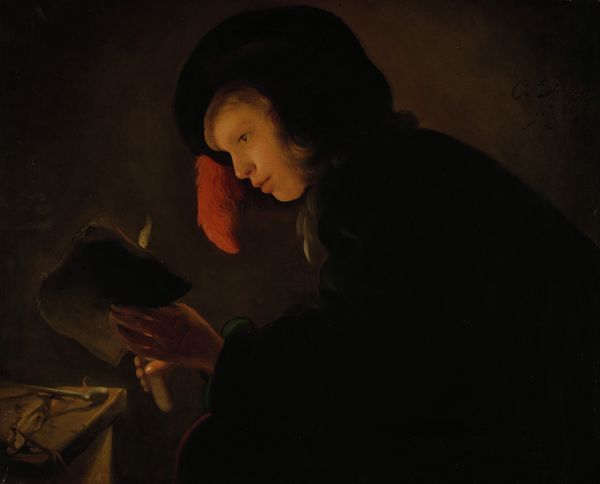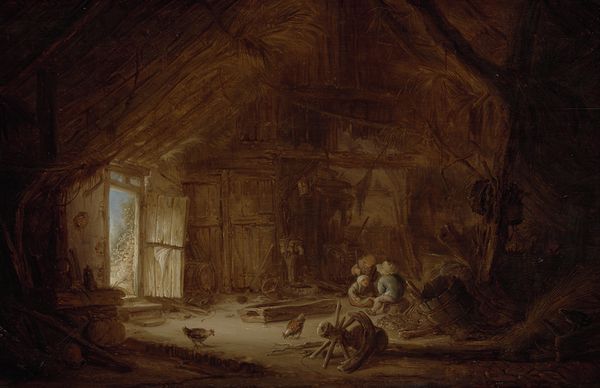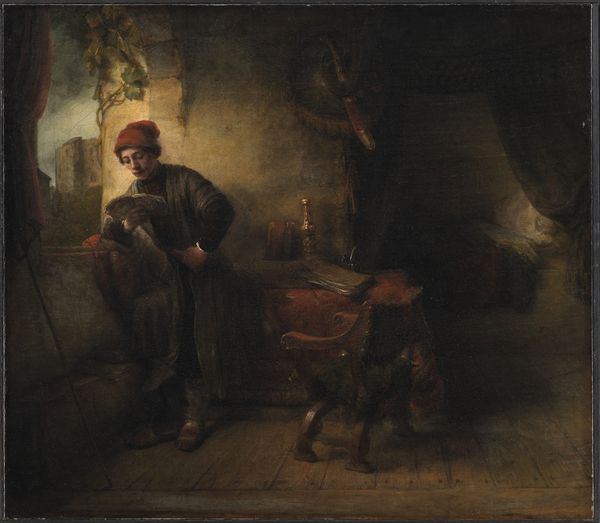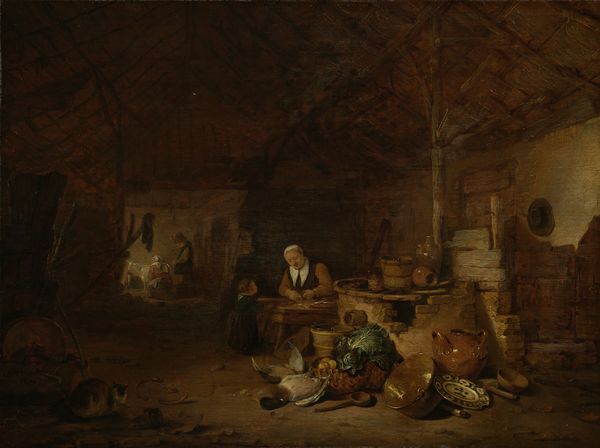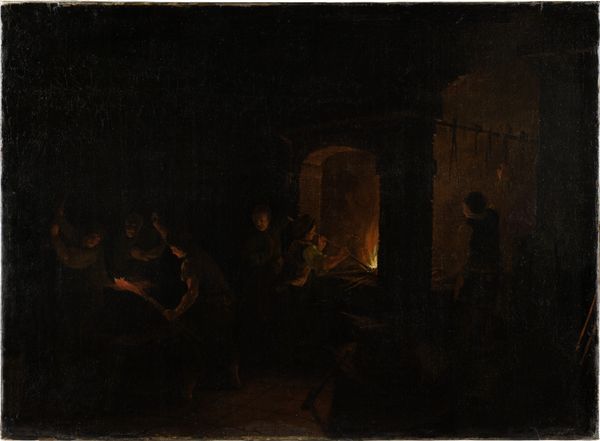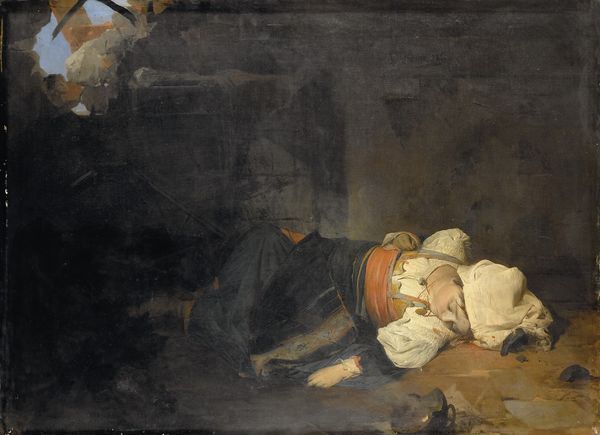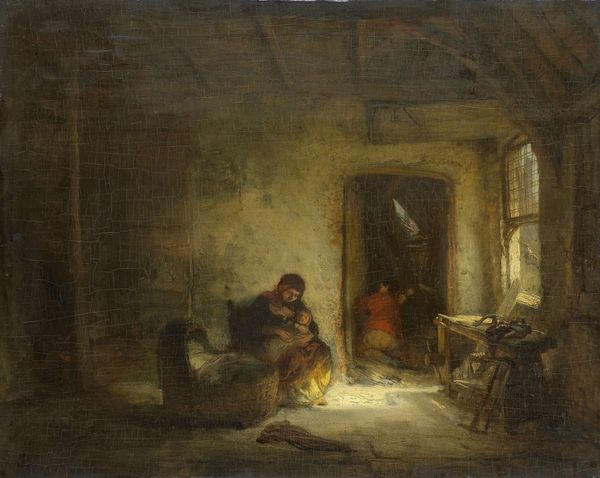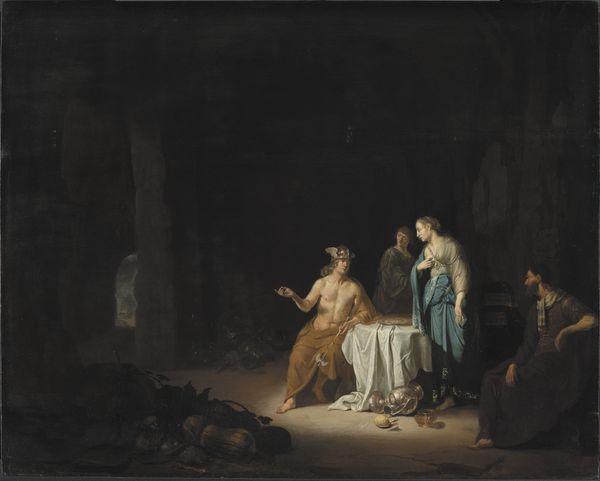
oil-paint
#
portrait
#
narrative-art
#
baroque
#
dutch-golden-age
#
oil-paint
#
chiaroscuro
#
genre-painting
Dimensions: height 66.5 cm, width 78 cm
Copyright: Rijks Museum: Open Domain
Curator: Welcome. Here we have Rembrandt van Rijn’s “The Holy Family at Night,” dating from about 1642 to 1648. It’s currently held here at the Rijksmuseum. Editor: It’s remarkably intimate. The darkness, pierced by such focused light, creates this feeling of hushed reverence, almost a secret being shared. Curator: Yes, the dramatic contrast—chiaroscuro—is quintessential Rembrandt. Look how he manipulates the light, not for mere illumination, but to guide the eye and emphasize form. The composition revolves around a central, radiant point, where the Virgin Mary, Joseph, and the Christ child are grouped. Note also how Rembrandt has arranged every item on the pictorial space. Editor: That cradled baby becomes a powerful, instantly recognizable emblem. Even in near darkness, it symbolizes new beginnings, hope...vulnerability. The older figures, reading close by the candlelight, bring in symbols of scholarship and perhaps providence, keeping vigil. The way their faces are lit evokes centuries of similar imagery. Curator: Indeed, the pictorial arrangement certainly adds an air of solemnity. Observe how the architecture is rendered—the steps lead our eyes further into the gloom, giving the impression of an almost cavernous interior. Even the simple geometric windows in the back seem placed in order to subtly advance the composition's effect. Editor: Absolutely. You almost get the impression the mundane setting—the ordinary domesticity—adds to its sacredness. A relatable setting, one of simple existence, amplifies the symbolism for all. Curator: You speak of quotidian existence, but I invite our audience to examine more deeply how Rembrandt creates such drama with shadow. There are tonal gradations occurring across all materials, creating the very depth that makes it so affecting. Editor: Yes, the formal techniques undeniably elevate the emotional power, even outside religious readings. As a narrative piece, it reflects core values, the sanctity of life. Curator: A powerful demonstration of painterly skill but also the power of iconography as visual shorthand. Editor: It is a fascinating conversation to consider, for sure.
Comments
No comments
Be the first to comment and join the conversation on the ultimate creative platform.

